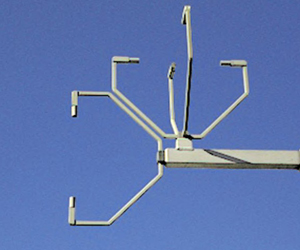

Sonic Anemometer Detail:
Our systems use Sonic Anemometers with RS-232 data connections that can be triggered to start a sample period. This trigger is usually a special character. When the trigger is received, the Sonic samples and averages wind velocity for a preset time then sends its result using the RS-232 connection. This often means the Sonic will receive another trigger before it transmits the data associated with the last trigger. Hardware and software interfaces for current Campbell and Applied Sonics exist. Solent and RM Young units have been used in the past -- but, our interfaces may need updating.
General Specifications for Sonic:
- Sonic connected to our RTU (Segregator, etc.) using the standard D-9 connector and a separate connector supplying 12 VDC. Sonic must be within 10 meters of the RTU.
- Output data synchronized to SuperLogger's master clock. Master Clock description
- Sample rates of: 1, 2, 5, 10 & 20 Hz.
- Power: 12 VDC, less than 2 Watts - supplied by RTU, Segregator, converter box, etc.
- Resolution: U, V, W vectors 1 cm/sec velocity -- temperature .01 C
- Sonic can be located up to 500 meters from SuperLogger (through an RTU or an HT-LAN converter).
"; while(!feof ($taginfo)) { $line = fgets($taginfo); echo $line; } fclose($taginfo); echo "
"; echo "Last modified: "; echo $today; echo "
"; ?>